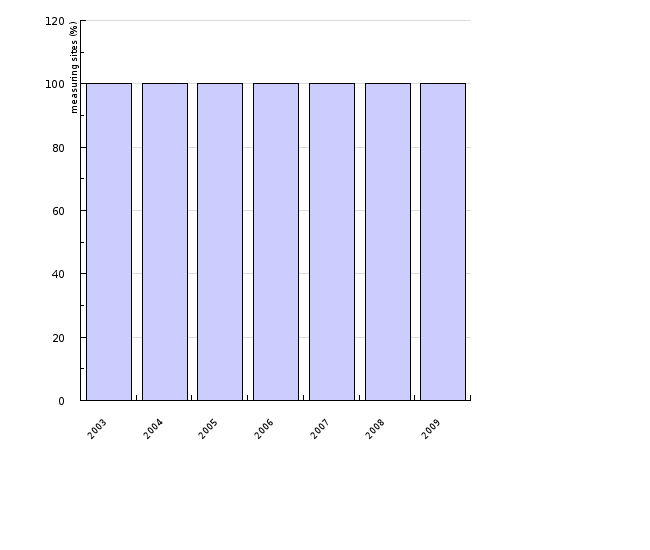-
-
-
-
-
-
-
-
Tools and collections
- Environmental atlas
- EIONET in Slovenia
- Environmental indicators
- IED devices
- Endangered species
- IS-waste

-
-
Tools and collections
- Environmental atlas
- EIONET in Slovenia
- Environmental indicators
- IED devices
- Endangered species
- IS-waste

[MR07] Suitability of marine water to support marine bivalves and gastropods

Key message

The quality of water required to support life and growth of marine bivalves and gastropods in the period 2003–2009 was in compliance with statutory requirements.
Definition
This indicator shows the quality of the Slovenian sea from the perspective of water quality requirements for life and growth of marine bivalves and gastropods.
In accordance with the Decree on the quality of water required to support marine bivalves and gastropods, basic physical/chemical parameters, halogenated organic compounds and metals in the water, as well as cadmium and hydrogen in sediments and bivalve meat was measured 4–12 times per year in the period 2003–2009. In the period between the beginning of summer and the beginning of spring, analyses of phytoplankton toxicity were also included in the programme.
Three monitoring sites are included in the monitoring of quality of water for life and growth of marine bivalves and gastropods: the Bay of Piran – Sečovlje, the mussel farm at Debeli rtič and the Bay of Strunjan.
Charts
| 2003 | 2004 | 2005 | 2006 | 2007 | 2008 | 2009 | ||
|---|---|---|---|---|---|---|---|---|
| suitable water quality | % | 100 | 100 | 100 | 100 | 100 | 100 | 100 |
Goals
- To protect and conserve the marine environment;
- To maintain water quality in order to support the life and growth of marine bivalves and gastropods;
- To reduce the quantity of nutrients in coastal waters.
Comment
The assessment of water quality for the life and growth of marine bivalves and gastropods for the period 2003–2009 shows that seawater at all three monitoring sites met the criteria from the Decree on the quality of water required to support marine bivalves and gastropods (Official gazette of the Republic of Slovenia, No. 52/07). Basic physical/chemical parameters, as well as faecal coliforms and the content of halogenated organic compounds, did not deviate from the prescribed limit values. Heavy metals in the water were present at all monitoring sites, but their concentrations were low and below limit values at all sites. The measured values of cadmium and hydrogen in bivalve meat and sediments complied with the prescribed evaluation methodology.
Methodology
Related indicators
Jasna Grbović, Polonca Mihorko, Mojca Dobnikar-Tehovnik, Agencija RS za okolje







